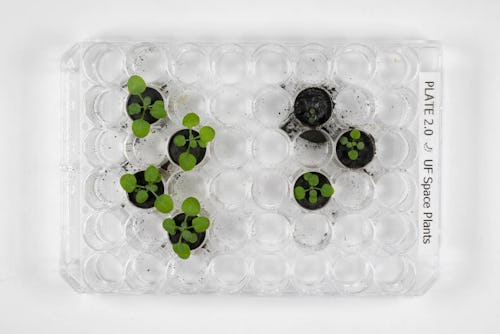
You, like most of us, probably have a pile of moon dirt hanging around in your house that you just don’t know what to do with. NASA ran into this problem recently, too. Luckily, they found a solution: It turns out you can grow Earth plants in lunar soil.
In a paper published in the journal Communications Biology, scientists at NASA revealed they were able to grow plants in soil collected from a different celestial body for the first time ever. Using surface samples scooped up from the Moon during the Apollo missions, the scientists were able to plant the seeds of Arabidopsis thaliana and see them sprout.
This is a big deal, and not just because it’s a first-of-its-kind experiment. It also tells us more about the prospect of humans maintaining an extended stay on the Moon — and may inform just how we’ll handle increasingly adverse conditions right here on Earth.
The moon dirt, formally known as lunar regolith, is more than 50 years old and was first collected during the Apollo 11, 12, and 17 missions, which ran from 1969 to 1972. The surface material is notoriously nutrient-poor, so the prospect of plants growing in it was considered dubious. But just 12 grams of unearthly dirt was all the Arabidopsis thaliana needed to grow.
The plant, sometimes called thale cress or mouse-ear cress, survives on Earth in Eurasia and Africa, where it’s considered a weed and is known for sprouting up in the shoulders of roads, so it’s no stranger to less-than-ideal conditions. But its ability to grow in soil that isn’t even of this planet is pretty wild.
Now, the plants didn’t grow as well in the lunar soil as they did in native dirt, but the fact that they grew at all shows promise. It means that it might be possible for astronauts to grow certain plants on the Moon, which would make it possible for extended stays there.
Maybe more relevant to the rest of us, though, is what it means for resiliency right here on our own rock. Earth is going to continue to get warmer thanks to human-caused climate change. That makes soil less moist, encourages it to release carbon, and hurts its overall ability to grow essential crops. That means plants that have no problem growing in these harsh conditions — particularly weeds like the Arabidopsis thaliana — will fare best. If we can figure out how to grow other plants and crops in moon dirt, we should be able to solve that same problem here on Earth.







